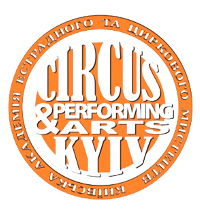Visual dictionary of “Memento Mori” art
Abstract
The article deals with the works of fine art of different periods, united by the common theme of “Memento mori”.
The difference between the philosophical worldview paradigm (on the example of the “Memento mori” mosaic of the first century BC and the Urbino diptych of the XV century) and the religious one (on the example of still lifes of the XVII century) is shown, which are embodied in the iconography of the works of these periods.
The article analyses the iconography, the role and significance of the attributes of “Memento mori” in creating the figurative system of “Danse macabre” and “Vanitas” compositions in the context of religious worldview.
It has been found that from the time of Greco-Roman culture to the end of the XVII century, a stable iconography of works on the theme of “Memento mori” was formed, in which the basis of the figurative structure is allegory and metaphor. The visual vocabulary that has developed in the fine arts of “Memento mori” includes images of the attributes of arts and sciences; wealth and power; earthly pleasures; symbols of the transience of life; symbols of resurrection, eternal life and immortality of the human soul; the soul of a sinner; and the hope of man for life after death, which is entrusted to God. It has been established that despite the changes in the meanings of symbols that have occurred over the centuries in the vocabulary of Memento mori, there are stable images common to works of different times: the skull and the butterfly. It is important that these symbols correspond to the binary opposition of DEATH – RESURRECTION, which is based on the religious paradigm of the worldview. Most often, in the scientific discourse on the topic of Memento mori in art, researchers' attention is focused on the statement about the inevitability of death and the futility of earthly life. This article focuses on the works of “Memento mori”, which, in addition to the message of death, contain statements about the resurrection and the existence of an afterlife after death.
References
2. Герасименко О., Пашкевич К., Кучер Т., Марус О. Використання символіки Memento mori в дизайні сучасних ювелірних виробів. Актуальні проблеми сучасного дизайну. Матеріали V науково-практичної конференції (27 квітня 2023 р.). Київ: КНУТД. 2023. Т. 1. Сc. 180-183.
3. Жукова Н. Феномен страху: рефлексія в образотворчому мистецтві ХХ – початку ХХІ століття (культурологічний аспект). Вісник Національної академії керівних кадрів культури і мистецтв. 2024. Вип. 1. Сc. 9-24.
4. Тарасенко О. Портрет і ритуал. Мистецтвознавство України. 2005. Вип. 5. Сс. 56-68.
5. Тарасенко О. Простір портрету. Музичне мистецтво і культура. Науковий вісник Одеської державної академії ім. А. В. Нежданової. 2005. Вип. 6 (1). Сс. 148-162.
6. AriesPh. The Hour of Our Death. New York: Knopf Doubleday Publishing Group. 2013. 696 p.
7. Ayça Y. Damien Hirst’ün Eserlerinde Ölüm Teması. 2019. V. 57. Pp. 577-586.
8. Colum Hourihane, ed. The Routledge Companion to Medieval Iconography. Routledge Art History and Visual Studies Companions. London and New York: Routledge, 2017. 580 p.
9. Dance of death. Allegorical concept. Encyclopædia Britannica. URL: http://surl.li/mgsgyl
10. Davies D., ed. A Cultural History of Death in Antiquity. London: Bloomsbury Academic. 2024. Vol. 1-6. 1728 p.
11. Fisher C. Flowers of the Renaissance. Los Angeles: J Paul Getty Museum, 2011. 176 p.
12. Huizinga J. Autumntide of the Middle Ages: A study of forms of life and thought of the fourteenth and fifteenth centuries in France and the Low Countries. Leiden University Press. 2020. 616 p.
13. Hrynda B., Tkachuk I., Lysun Y., Shymin Y., & Odrekhivskyi V. A imagem da morte no discurso visual da iluminura francesa dos séculos XIII-XV: Tipologias Iconográficas e Práticas Artísticas. Convergências – Revista De Investigação E Ensino Das Artes, 2024. 17 (33). Рp. 47-66.
14. Meagher J. Botanical Imagery in European Painting. Department of European Paintings. The Metropolitan Museum of Art. 2007. URL: https://www.metmuseum.org/toah/hd/bota/hd_bota.htm.
15. Metropolitan Museum of Art. 2007.
URL: http://surl.li/hyzypw.
16. Ostberg R. Memento mori. Latin phrase. Encyclopædia Britannica. https://www.britannica.com/topic/memento-mori.
17. Plato. Phaedo (Cambridge Greek and Latin Classics) (C. J. Rowe, Trans.). Cambridge University Press, 1993 (Original work published ca. 360 BCE).
18. Schneider N. The Art of the Portrait (Masterpieces of European Portrait Painting 1420-1670). Barnes & Noble Books, 1997. Pp. 48-51.
19. Vanitas. Encyclopædia Britannica. https://www.britannica.com/art/vanitas-art.
20. Völser I. The theme of death in Italian art: the triumph of death. McGill University: 2001. 175 p.
21. Wilson M. The Hidden Language of Symbols. Publisher: Thames & Hudson, 2022. 272 p.

 ISSN
ISSN  ISSN
ISSN 



